
With some 115,000 alumni, nearly 30,000 students, 4,000 faculty and staff, and thousands of staunch supporters, The University of Texas at Dallas family comprises a dazzling constellation of 150,000 shining stars — and counting.
To celebrate our first 50 years, we chose 50 Points of Bright to highlight the University’s past, present and potential: our milestones, discoveries and distinctive leaders; our impact and influence on North Texas and the world; and the creativity and enterprising spirit that have been — and will continue to be — UT Dallas’ guiding light.
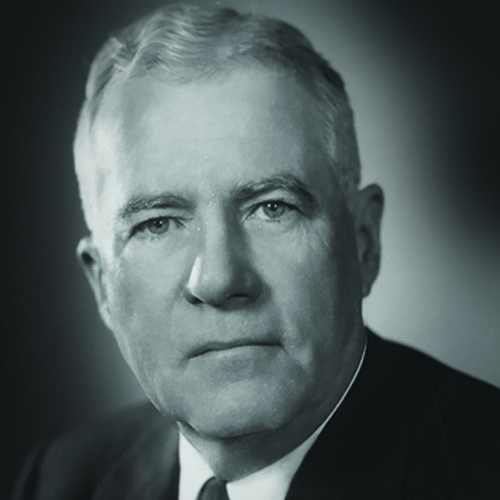
Eugene McDermott Scholars Program
In the midst of its 19th year, the Eugene McDermott Scholars Program surely exceeds anything Margaret McDermott could have imagined when she made a historic gift of $32 million to launch the program and to honor her late husband, one of the founders of UT Dallas. There are currently 82 active McDermott Scholars and 270 alumni. These scholars receive one of the most selective and generous undergraduate merit awards in the nation, including a full scholarship and stipend package, leadership training, cultural enrichment and study abroad opportunities designed to equip them with the skills, experience and confidence to succeed as leaders. From across the U.S. and around the world, the current class of students has a collective average two-part SAT score of 1560; almost all are National Merit Scholars.
UTeach Dallas
UTeach Dallas prepares undergraduate students majoring in such fields as physics, math, chemistry, computer science, engineering and biology to be secondary STEM teachers. Established at UT Dallas in 2007 with support from the National Math and Science Initiative, the program allows students to earn secondary teaching certification while simultaneously completing bachelor’s degrees in STEM fields. The program has been supported by grants from Tellabs Foundation, the Greater Texas Foundation, the O’Donnell Foundation, the Texas Instruments Foundation and the Hamon Charitable Foundation. Since the first cohort graduated in 2011, the program has generated 233 alumni. UTeach Dallas graduates in the classroom reach about 24,000 children each year, and more than 90% of alumni remain teachers five years after graduation.

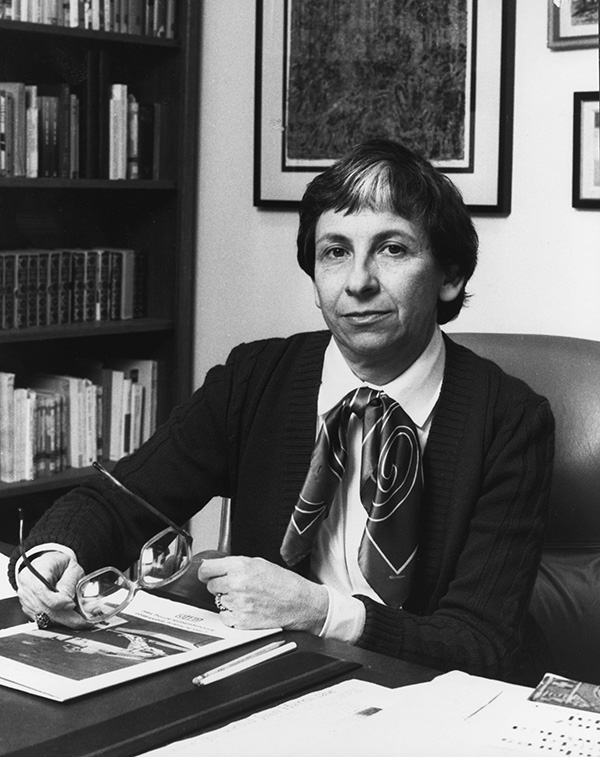
Dr. Carolyn Lipshy Galerstein
As UT Dallas’ first female dean, Dr. Carolyn Lipshy Galerstein was a champion for more women to enter or return to college. With that in mind, Galerstein — who oversaw the School of General Studies (now the School of Interdisciplinary Studies) — created a program called “Maturity College,” which provided more evening classes and a welcoming environment. The Galerstein Gender Center is named in her honor, and the Carolyn Galerstein Endowed Scholarship supports undergraduate students in the School of Interdisciplinary Studies.
LEED Buildings
When the new Engineering and Computer Science West building was awarded LEED Gold status by the U.S. Green Building Council, it became the seventh building at UT Dallas with LEED certification. The Davidson-Gundy Alumni Center and the Bioengineering and Sciences Building have each achieved Gold recognition. The Student Services Building earned the highest certification of Platinum in 2010. Silver certifications were awarded to the Edith O’Donnell Arts and Technology Building, the Naveen Jindal School of Management Addition and the complex composed of Residence Hall West, Dining Hall West and Rec Center West. LEED, or Leadership in Energy and Environmental Design, recognizes environmentally conscious construction with a commitment to sustainable site development, water savings, energy efficiency, materials selection, indoor environmental quality and cutting-edge design.


Academic Bridge Program
Created in 2000 and supported by funds from the Texas Legislature, UT Dallas and private donors, the Academic Bridge Program helps high-potential students from Dallas-area urban high schools succeed in college with programming that begins in the summer after high school graduation. Through peer mentorship, financial support and rigorous academic coaching, Academic Bridge students are able to transition from high school to college. The program has a proven track record of success, with a 70 % graduation rate and more than 45 % of students majoring in engineering, science or business management.
Geospatial Information Sciences
Do a Google search on “geospatial information sciences” and the top entries point to UT Dallas’ nationally recognized academic programs in the field, housed in the School of Economic, Political and Policy Sciences. With faculty who are among some of today’s highest-regarded thinkers and researchers in the field, the program offers bachelor’s, master’s and doctoral degrees in GIS and graduate certificates in geospatial intelligence, geographic information systems and remote sensing. Acknowledging the program’s ability to prepare future workers for fields such as homeland and global security, and disaster management, the Department of Defense’s National Geospatial-Intelligence Agency and U.S. Geological Survey in 2015 named it a Center for Academic Excellence in Geospatial Sciences, the only one in Texas and one of 17 nationwide.


Sustainability:
Bee and Tree Campus USA
UT Dallas has achieved two designations that show its commitment to sustainability. For its efforts to raise awareness and develop a pollinator-friendly habitat and a least-toxic pest-management plan, UT Dallas was awarded a Bee Campus USA designation. Students install and maintain beehives and harvest honey at the micro-apiary on campus. Faculty members Dr. Scott Rippel and Dr. Christina Thompson teach Honey Bee Biology and take an observation hive to campus and community events. UT Dallas also has received the Tree Campus USA designation from the Arbor Day Foundation for establishing a strong tree maintenance and management program, and holding tree-related service projects and educational outreach on campus. Today, there are more than 6,700 trees on campus, representing more than 65 species.
The Nobel Laureates

Dr. Polykarp Kusch
1955 Nobel Prize in physics
Regental Professor of physics
1972 – 1982
“Science is the greatest creative impulse of our time. It dominates the intellectual scene and forms our lives, not only in the material things which it has given us, but also in that it guides our spirit. Science shows us truth and beauty and fills each day with a fresh wonder of the exquisite order which governs our world.”

Dr. Alan MacDiarmid
2000 Nobel Prize in chemistry
James Von Ehr Distinguished Chair in Science and Technology
2002 – 2007
“I find UTD to be an institution with a deserved emerging national reputation and a school which can become a truly great university.”

Aziz Sancar, PhD’77
2015 Nobel Prize in chemistry
“I started on DNA repair at UT Dallas, and I have continued for over 40 years on that path. The University has had a significant impact on my research.”

Dr. Russell Hulse
1993 Nobel Prize in physics
Regental Professor and associate vice president for strategic initiatives Founding director of the Science and Engineering Education Center
2004 – present
“UT Dallas has shown a strong commitment to contributing to its local communities through … science outreach programs, which is what attracted me here to help make such programs a reality.”
The Presidents

Dr. Bryce Jordan
1971 – 1981
“I went up to Dallas to meet with a so-called selection committee of the faculty that was chaired by a cosmologist named Ivor Robinson. I met with him, and we talked for a while, and I was puzzled enough that I said to Ivor Robinson, ‘Why in the world would you scientists want this musicologist to be president of your university?’ And I will never forget Ivor’s response. He said, ‘Dr. Jordan, you don’t know a thing about what we do, and we like it that way.’ And that’s how I became president of UT Dallas.”

Dr. Robert Rutford
1982 – 1994
“Well, I knew a little bit about the
University before I got here because Marty Halpern, who had been in the geosciences department, was an Antarctica guy also, and so we had talked about this a little bit. And it was known for the history with TI and as a very unique place that started as a PhD university and basically worked its way down instead of starting as an undergraduate university and building its way up.”

Dr. Franklyn Jenifer
1994 – 2005
“Presidents come to serve. We are not here that long. We should love our work, and we should do it hard, but there comes a point in time where we should move on and do other things and enjoy life. But there is something almost spiritual about the corpus of the University — that it survives human beings and goes on, and it has a spirit of its own.”

Dr. David Daniel
2005 – 2015
“I just want to leave it better than I found it, and these two gentlemen [Rutford and Jenifer] left it a lot better than they found it. And it’s just a question of how much differential — delta we would say in mathematical terms — can we add to the University on my watch. And I hope it can be said that it’s a better place when I leave than it was when I came.”
Dr. Richard Benson
2016 – present
“One of the things I like about UT Dallas is that it’s not like a great many other universities. It’s still a very young university. It’s interesting to look at pictures of the original campus — with the Founders Building and then just sort of the prairie extending out in all directions — and then to look and see how the campus filled in, which is sort of a metaphor for what happened to the University as the people arrived. The faculty, the staff and the students, and everybody. The founders are still with us, and I don’t just mean in spirit. I mean we are still busy giving definition to this wonderful University. The things that we are doing today will have a major impact on the very character of the University, and we’re very privileged that we get to be part of that.”


Dr. James Reilly
Distinguished alumnus James Reilly BS’77, MS’87, PhD’95 has worked in the most extreme environments — Antarctica, the deep sea and outer space. Reilly, who earned three degrees in geosciences from UT Dallas, worked as an oil and gas exploration geologist — spending the equivalent of 22 days in deep-submergence vehicles conducting research in the oceans — before he was selected for NASA’s astronaut program in 1994. As a mission specialist, he spent 853 hours in space, including five spacewalks during which he helped assemble the International Space Station. In 2018 he was appointed director of the U.S. Geological Survey.

Dr. Brian Berry
2005 Vautrin Lud Prize
Lloyd Viel Berkner Regental Professor, 1986 – present
Dr. Brian Berry is one of the most influential figures in the disciplines of geography, urban studies and regional planning. His early work helped spark the scientific revolution that occurred in geography and urban research in the early 1960s, making him the world’s most frequently cited geographer for more than 25 years. In 1975 he was the youngest social scientist ever elected to the National Academy of Sciences. In 1988 he earned the Royal Geographical Society’s highest honor, the Victoria Medal, and in 2005 he received the Vautrin Lud Prize, considered the “Nobel Prize for Geography.” Berry served as dean of the School of Economic, Political and Policy Sciences from 2005 to 2010. His research has focused on investigations of long-term economic and political cycles, or Kondratieff waves, in market societies, work for which he received a Kondratieff Medal from the Russian Academy of Sciences in 2017.
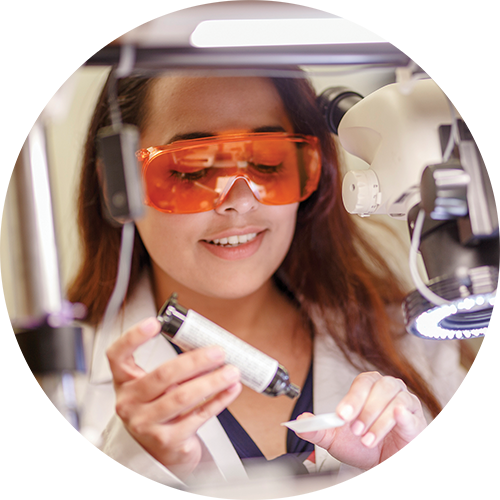

Texas Biomedical Device Center
Investments totaling $13 million from Texas Instruments, a private donor and the UT System established the Texas Biomedical Device Center in 2012. Center scientists and engineers from multiple disciplines develop novel technologies to prevent injuries, detect impairments and restore quality of life lost to neurological injuries and disease. Their pioneering targeted plasticity therapy, which helps “rewire” neural pathways around injured parts of the brain, allows people to recover motor, sensory and cognitive functions. Center researchers work with industry partners and clinicians at UT Southwestern Medical Center to translate their devices and techniques into clinical care.
William B. Hanson Center for Space Sciences
Atmospheric and space sciences have always played a key role in UT Dallas’ research enterprise. The earliest efforts through the Graduate Research Center of the Southwest included launching balloons and rockets, and designing space-based instruments to study the Earth’s upper atmosphere. Over the years, space scientists and engineers at the William B. Hanson Center for Space Sciences have designed and built equipment to explore Venus, Mars, the moon and Halley’s comet. Studies of the ionosphere — a region of charged particles in the Earth’s upper atmosphere — and magnetosphere have provided valuable insight into “space weather,” our planet’s dynamic interaction with the sun.
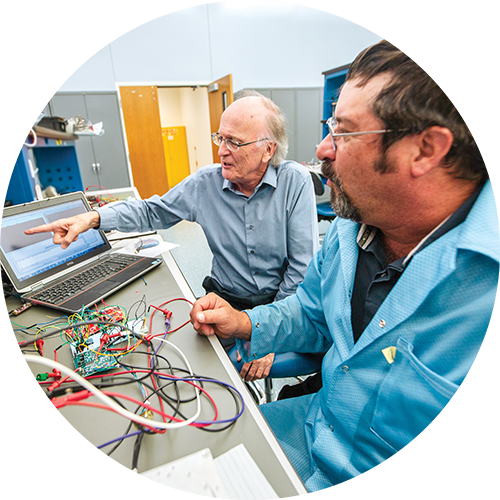
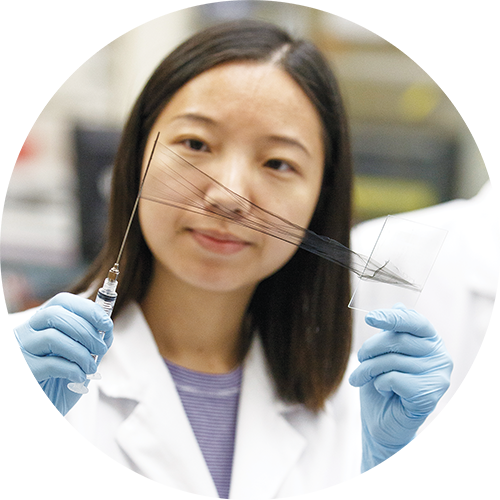
Alan G. MacDiarmid NanoTech Institute
In the early 2000s, UT Dallas wanted in on the burgeoning field of nanotechnology — the study and control of materials on the atomic and molecular scales. The administration approached Dr. Alan G. MacDiarmid for help — after all, he had just won the 2000 Nobel Prize in chemistry. MacDiarmid suggested Dr. Ray Baughman, a 30-year industry veteran, prolific inventor and expert in the field. The NanoTech Institute opened its doors in 2001 with Baughman as its director. In 2002 MacDiarmid himself joined the UT Dallas faculty, and the center was named in his honor in 2007. Researchers in the institute have made pioneering discoveries involving carbon nanotubes, resulting in advances that are being translated into commercial applications.
Morris Hite Center for Product Development and Marketing Research
UT Dallas established the Morris Hite Center for Product Development and Marketing Research in 1984 to support graduate students and faculty in creating marketing strategies for new and existing products. The center was endowed and named in honor of an early champion of UTD, Hite, who was once president of Dallas-based ad agency TracyLocke. As president of the Dallas Chamber of Commerce, he helped promote construction of the Dallas Fort Worth International Airport and envisioned the Dallas Arts District. He also supported higher education in the Dallas area, in particular lobbying for the challenging effort to add the Southwest Center for Advanced Studies — UTD’s precursor institution — to the UT System in the late 1960s.

Center for BrainHealth
Researchers at the Center for BrainHealth form a multidisciplinary team of cognitive neuroscientists, clinicians, imaging specialists, biostatisticians and neuroengineers who work toward the common goal of translating research findings into relevant applications as quickly as possible. Founded in 1999, researchers in the center’s labs use structural and neuroimaging techniques to understand brain health, injury and disease. Projects include youth brain injury assessment, caregiver training, law enforcement mindfulness training and adolescent reasoning training. In 2013 the center launched the Brain Performance Institute to transform discoveries into actionable findings available to the public, with the aim of empowering people of all ages to unlock their brain potential.
Center for Translation Studies
The Center for Translation Studies within the School of Arts and Humanities is one of the oldest academic centers for literary translation in the U.S. Since 1980, the center has received international recognition for its pioneering role in promoting the study and practice of literary translation. Dr. Rainer Schulte, the Katherine R. Cecil Professor in Foreign Languages, founded the center and is himself considered the founder of translation studies as an academic discipline. At the time the center was created, translations of literary texts were primarily done in Europe, and Schulte wanted to change that. Schulte also launched Translation Review, an academic journal that provides a forum to dialogue about the importance of translation, to discuss the challenges in transplanting a text from a foreign culture into English, and to increase the visibility and status of the translator.
Ackerman Center for Holocaust Studies
The Holocaust Studies Program — encompassing scholarly research, undergraduate courses and one of the few graduate certificates in Holocaust Studies in the U.S. — is a hallmark of UT Dallas. The program was founded in 1986 by Dr. Zsuzsanna Ozsváth, a Hungarian-Jewish Holocaust survivor, author of books about her experiences, and the Leah and Paul Lewis Chair of Holocaust Studies. Edward M. Ackerman and his wife, Wilhelmina, made the lead gift in 2006 that named the Ackerman Center. Distinguishing elements of the program in the School of Arts and Humanities include the Arnold A. Jaffe Holocaust Library Collection and the annual Burton C. Einspruch Holocaust Lecture Series, which is open to the public and brings eminent scholars and prominent figures to campus.
Texas Analog Center of Excellence
As the demand for internet-connected devices grows, so does the need for researchers who can solve the challenges of converting real-world information into digital signals. UT Dallas’ Texas Analog Center of Excellence (TxACE) has supported more than 200 projects involving 42 academic institutions since it was founded in 2008. With its focus on energy efficiency, health care, and public safety and security, the center’s accomplishments include advances in heat-based imaging technologies and breath analysis to detect certain diseases. The center is a collaboration between the Semiconductor Research Corp., the state of Texas, Texas Instruments, the UT System and UT Dallas.
Institute for Urban Policy Research
Research plays a critical role in solving pressing problems facing distressed communities. UT Dallas’ Institute for Urban Policy Research provides research and evaluation, education and outreach, guidance and consulting to community-focused organizations working on a range of issues. Researchers in the institute have tracked domestic violence incidents and outcomes for the Dallas Domestic Violence Task Force, compiled data on the well-being of local youth through a partnership with Children’s Health and worked with a variety of other Dallas-area organizations. Founded in 2005 as the J. McDonald Williams Institute, the organization moved to UT Dallas in 2008, thanks to a generous donation from Trammell Crow Chairman Emeritus Don Williams. It remains housed in the School of Economic, Political and Policy Sciences.

Callier Center for Communication Disorders
Lena Callier lost her hearing and became isolated from the world. In response, she created a trust that gave rise to the Callier Hearing and Speech Center in 1963. Initially housed in the basement of Parkland Hospital, the center moved to its current Dallas location in 1969. The center, which included a deaf-education program, took on a new name — the Callier Center for Communication Disorders — and in 1975 became a component of UT Dallas, which began enrolling students in audiology and speech-language pathology. Today, the academic program is consistently ranked among the top five in the nation, and the center remains a leader on the causes, prevention, diagnosis and treatment of communication disorders in adults and children. Callier dispensed the first digital hearing aid and was the first place a child in North Texas heard via a cochlear implant. In 2016 the center expanded to a new facility on the UT Dallas Richardson campus. The 100,000th patient was celebrated in November 2019.

Center for Children and Families
Through research, clinical practice and outreach, researchers affiliated with the Center for Children and Families (CCF) promote optimal family and child development. Founded in 2008, CCF’s programs focus around parenting healthy children, strengthening interpersonal relationships, and enhancing thinking and learning. Center-affiliated researchers from the School of Behavioral and Brain Sciences and the School of Economic, Political and Policy Sciences examine a wide range of important issues related to biological, psychological, social and cultural foundations of child development, as well as their implications for families.
Center for Vital Longevity
Founded in 2010, the Center for Vital Longevity comprises distinguished scientists focused on understanding how and why cognitive abilities change with age, and how these events relate to changes in the brain’s structure and function. They aim to identify, as early in life as possible, brain markers that predict who is most likely to maintain cognitive health as they grow older and who is most at risk of falling victim to Alzheimer’s disease or other causes of age-related cognitive impairment. With this knowledge, they are developing behavioral and cognitive interventions that can prevent, slow or even reverse age-related cognitive decline.
Institute for Innovation and Entrepreneurship
Founded in the early 2000s by the Naveen Jindal of School of Management and the Office of Research, the Institute for Innovation and Entrepreneurship (IIE) operates across the University’s eight schools to enable the next generation’s new ventures. The institute promotes and facilitates student, faculty and alumni entrepreneurship through the Blackstone LaunchPad co-working space as well as through the Venture Development Center, which opened in 2011 as an incubator designed to transform early stage startups into companies with marketable products and services. The IIE hosts the Big Idea Competition — a student-startup pitch contest — and facilitates the award-winning UT Dallas Seed Fund, which invests in student technology startups.
Entrepreneurship by the Numbers
(as of 2019)
UT Dallas entrepreneurship programs rank in the Top 25 in the world, according to 2020 rankings by The Princeton Review:
Technology Commercialization
UTDesign
UTDesign gives seniors in the Erik Jonsson School of Engineering and Computer Science the opportunity to work on corporate-sponsored capstone projects. Coached by a corporate mentor and a faculty advisor, each team determines the customer’s needs, conducts research, designs and tests a solution, and prepares a demonstration for the UT Design Expo. The UTDesign Studio offers working space for teams and includes a fabrication shop, 3D printers and computer-aided design stations, among other features. Nearly 4,000 students have completed over 700 projects for 274 companies — winning eight first-place awards in national capstone competitions since 2014. As enrollment in the Jonsson School continues to grow, UTDesign expects to launch 225 more capstone projects in the coming year, with at least 175 of them sponsored by companies.

Carnegie “Tier One”
In 2016 the Carnegie Classification of Institutions of Higher Education recognized UT Dallas as an R1 institution – a classification reserved for doctoral institutions with “very high research activity.” The elite classification is often referred to as “tier one” status. UTD is among the top 131 universities in the country with this rating.
Crow Museum and Barrett Collection
A major step forward in the role of the arts in the life of UT Dallas occurred at the juncture of 2018 and 2019, as two of the region’s most significant art collections were given to UT Dallas. The Barrett Collection, consisting of over 400 works of Swiss art, is the single-largest donation ever made to the University, as well as the largest gift of art to any school in the UT System. The collection, started in the 1990s by Richard Barrett, comprises a collection of paintings, sculpture, drawings and prints and is the only definitive collection of Swiss art outside of Switzerland. In early 2019, the Trammell and Margaret Crow family donated the entire collection of the Trammell and Margaret Crow Museum of Asian Art, along with $23 million to construct a second museum on campus, to UT Dallas. The Crow Museum’s permanent collection demonstrates the diversity of Asian art, with more than 1,000 works from Cambodia, China, India, Indonesia, Japan, Korea, Myanmar, Nepal, Pakistan, Thailand and Vietnam, spanning the ancient to the contemporary.
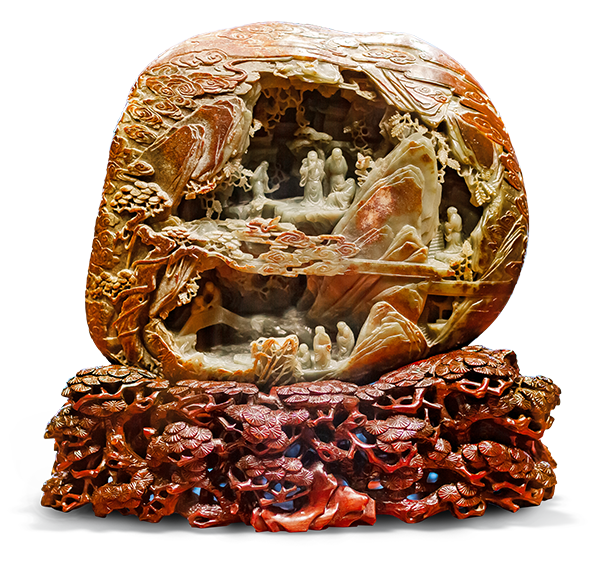
History of Aviation Archives
The History of Aviation Archives is the largest section of the Special Collections Division of the Eugene McDermott Library. It houses historical documents and materials from the Vought Aircraft Company and Braniff International, as well as the archives of Gen. James H. Doolittle, a World War II aviation pioneer who led a top-secret raid on Japan and who played a major role in the development of commercial and military aviation. The holdings also include declassified documents that reveal the story of the CIA’s once secretly owned airline Air America and its precursor, Civil Air Transport, and their covert activities during the Cold War.

Texas Symposium on Relativistic Astrophysics
In 1963 Professor Ivor Robinson, an expert on relativity theory, was founding head of the mathematics and mathematical physics division at the Graduate Research Center of the Southwest. Around his pool that summer, he and colleagues from UT Austin decided they should organize a scientific conference in Dallas, so they invented a new scientific discipline and called it relativistic astrophysics. The December 1963 conference drew more than 300 international experts. The symposium was such a success that it has since been held every two years around the world, yet still retains the name Texas Symposium on Relativistic Astrophysics. Robinson, who died in 2016, spent his career at UT Dallas, retiring as a professor emeritus, and was an honorary member of the organizing committee when the physics department hosted the Texas Symposium’s 50th anniversary conference in Dallas in 2013.
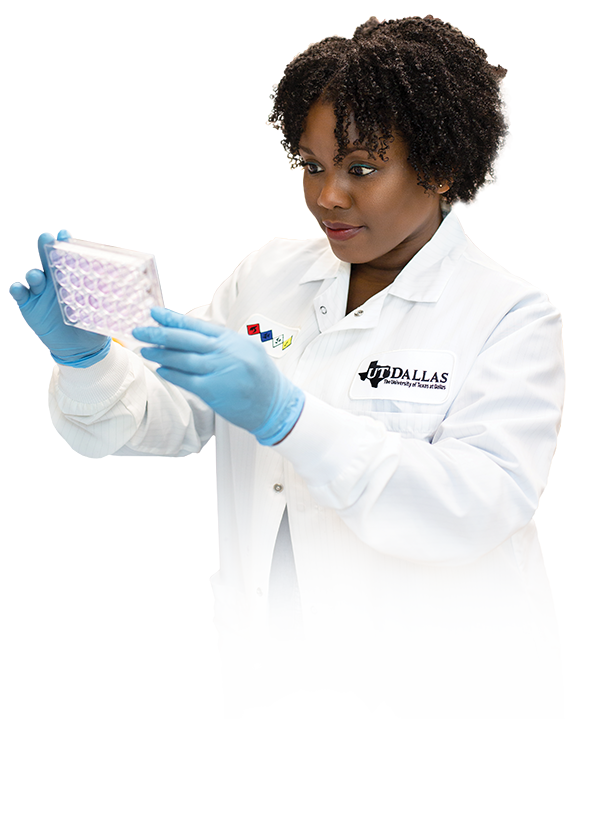
National Research University Fund
In 2009 UT Dallas hosted then-Texas Gov. Rick Perry and representatives of six other emerging research universities from across the state as Tier One legislation, known as House Bill 51, was signed into law. The legislation offered to match private funding and provide support from the National Research University Fund (NRUF) to reward the state’s “emerging research universities” for their research productivity. In 2018 UT Dallas achieved the critical benchmark criteria required to qualify for funding from NRUF — including $45 million in annual expenditures on restricted research and a $400 million endowment — becoming the third university and the youngest in the state to qualify.
Dr. Frederick Turner
Dr. Frederick Turner is an internationally known poet, as well as a cultural critic, playwright, philosopher of science, aesthetician, essayist and translator. A prolific scholar and exceptional teacher, Turner has received numerous literary, artistic and academic honors and is a fellow of the Texas Institute of Letters. Turner’s Genesis: An Epic Poem, published in 1988, was the first major work of poetry that addressed the idea of terraforming Mars. The noted polymath and practitioner of Shotokan karate has philosophical interests ranging from time and evolution to self-organizing complex systems in game theory and economics. He joined the faculty in 1985 and is the Founders Professor in the School of Arts and Humanities.


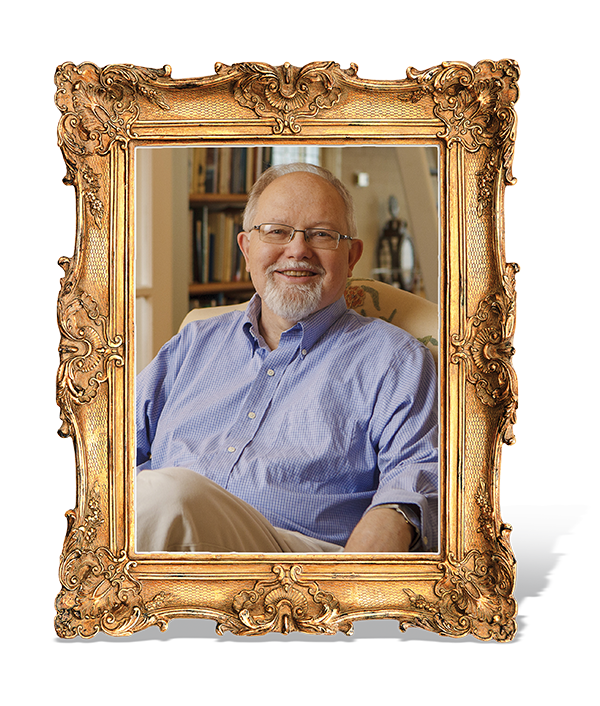
Dr. Richard Brettell
Dr. Richard Brettell founded the Center for the Interdisciplinary Study of Museums at UT Dallas in 1998. His expertise encompasses Impressionism and French painting from 1830 to 1930. His museum experience includes serving as the Eugene McDermott Director at the Dallas Museum of Art and Searle Curator of European Painting at the Art Institute of Chicago. He is the founding director of the Edith O’Donnell Institute of Art History at UT Dallas and has served as an international museum consultant with projects in Europe, Asia and the U.S., including The Millennium Gift of Sara Lee Corporation, the largest corporate gift to the arts in American history. He also holds the Margaret M. McDermott Distinguished Chair of Art and Aesthetic Studies and the Edith O’Donnell Distinguished University Chair, and was most recently named to the board of the Hermitage Museum Foundation.
Edith O’Donnell Institute of Art History
The Edith O’Donnell Institute of Art History was established at UT Dallas in 2014 with a generous endowment from arts patron O’Donnell. The institute is a center for innovative research and education in the history of art that ranges across geography, chronology and medium. The first art history research institute founded in the digital age, the O’Donnell Institute explores the intersection between the visual arts and the sciences and technology. The institute is housed in offices at UT Dallas and in a research center at the Dallas Museum of Art. Research fellows have pursued projects ranging from Byzantine icons to the landscapes of Gustave Courbet, while the institute has launched major international research partnerships with Nanjing University in China and the Museo e Real Bosco di Capodimonte in Naples, Italy.
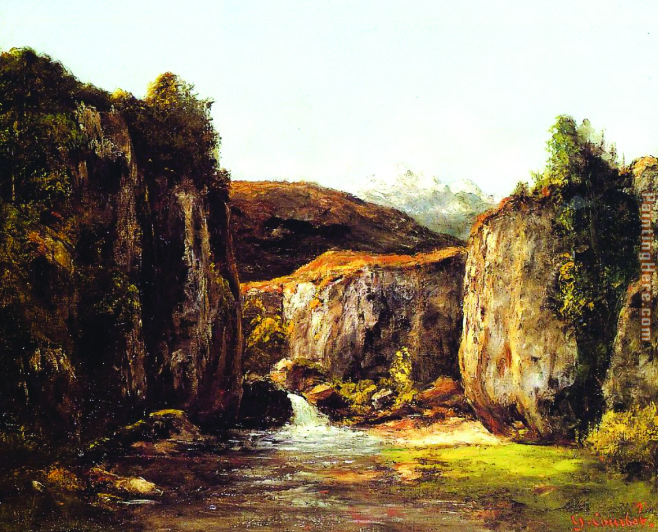

ATEC Labs
The vibrant lab and studio culture in the School of Arts, Technology, and Emerging Communication (ATEC) fosters collaboration across disciplines and cultivates creativity by blending artists, humanists, scientists, engineers, programmers, designers and innovators. Some of the spaces include: Emerging Gizmology Lab, Games Research Lab, ArtSciLab, Narrative Systems Research Lab and the Studio for Mediating Play. In the Animation Research Lab, ATEC animators collaborated with Latin American historians in the School of Arts and Humanities to produce “Animating El Oro: Animation for the Digital Humanities,” a project that described the involvement of the U.S. in the reconstruction effort of a small province in Ecuador after being invaded by Peruvian troops during World War II.

Dr. Frank Bass
Dr. Frank Bass, a pioneer in the field of marketing science, joined UT Dallas in 1982 as a marketing professor and later became dean of the School of Management. He earned international recognition after creating the Bass Model, a mathematical model used to predict the sales and life cycles of various consumer products, including color TVs in the 1960s and wireless telephones and disposable diapers in the 1980s. In 2003 he won the prestigious Charles Coolidge Parlin Marketing Research Award, the oldest and most distinguished award in the field of marketing research. In his honor, the Naveen Jindal School of Management hosts the annual Frank M. Bass — UT Dallas Frontiers of Research in Marketing Science Conference.
Musica Nova
Formed in 1975 under the direction of internationally recognized composer-conductor Dr. Robert Xavier Rodríguez, professor of art and performance and Chair in Art and Aesthetic Studies, the Musica Nova ensemble performs music written for large and small ensembles, plus mixed-media and theater works of all periods. Instrumentalists, singers, composers, actors, dancers and video artists from UT Dallas’ Advanced Orchestra/Chamber Music Ensemble class join faculty and other professional musicians. Musica Nova guest artists have included members of the Dallas Symphony Orchestra and Dallas Opera Orchestra and singers from the New York City Opera and Metropolitan Opera.
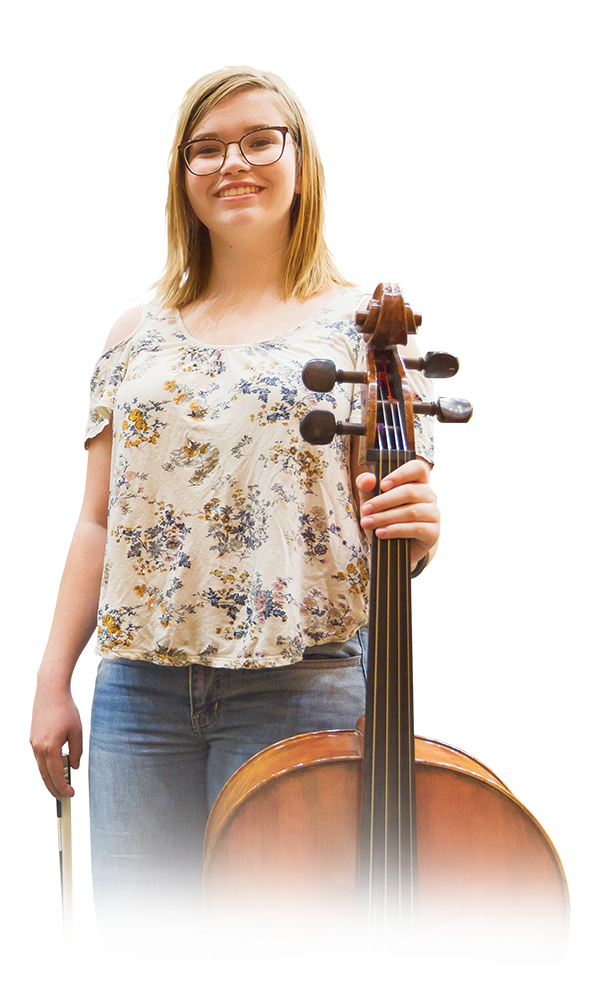
Carbon Nanotubes
UTD scientists, led by Dr. Ray Baughman, the Robert A. Welch Distinguished Chair in Chemistry, pioneered and patented a process that transforms tiny tubes of carbon — 10,000 times thinner than the width of a human hair — into useful, large-scale structures such as sheets and twisted yarns that are super-strong and extremely light. In 2005 Discover magazine ranked the work as the eighth-most important scientific discovery of the year. Carbon nanotube materials have unique properties that make them potentially suitable for use in areas such as artificial muscles, wearable electronics, electronic displays, solar panels, sound projectors, batteries and harvesters of waste energy.

Black Hole Collisions
Dr. Michael Kesden’s area of expertise was thrown into the international spotlight in February 2016 when scientists with the LIGO (Laser Interferometer Gravitational-Wave Observatory) collaboration announced that they had, for the first time, directly detected gravitational waves, which are ripples in the fabric of space and time generated by massively energetic events. The Earth-based experiment detected gravitational waves originating from two distant colliding black holes. Although not a part of the LIGO team, Kesden, associate professor of physics, in February 2015 had published solutions to equations that described such binary black hole systems and the gravitational waves they produced. The LIGO founders won the Nobel Prize in physics in 2017.

Targeted Plasticity Therapy
A technique developed by Dr. Michael Kilgard, the Margaret Fonde Jonsson Professor of neuroscience, has proved to aid the recovery of stroke victims who suffer weakness and paralysis. Targeted plasticity therapy pairs vagus nerve stimulation — the application of a precisely timed, mild electrical impulse through the nerve — with traditional motor-skill rehabilitation, a process that encourages the brain to reorganize. UT Dallas researchers have investigated targeted plasticity therapy for tinnitus, post-traumatic stress disorder and more, including accelerating cognitive skills training for such purposes as learning foreign languages.


The Apollo Recordings
NASA recorded thousands of hours of audio communications between astronauts and ground control during the moon missions, including Neil Armstrong’s famous quotes from Apollo 11 in July 1969. Yet few people have heard more than the highlights. Much of this audio remained in storage on outdated 30-track analog tapes for decades until researchers at UT Dallas launched a project to recover, digitize and analyze the audio and make it accessible to the public. The project began in 2012 and was completed in 2017 under the direction of Dr. John Hansen, professor of electrical engineering and Distinguished Chair in Telecommunications.

Higgs Boson
UT Dallas scientists and students played a role in groundbreaking experiments that led to the discovery in 2012 of a new elementary particle of matter, the long-sought-after Higgs boson. Researchers from the Department of Physics helped build detectors and analyze data from two experiments underway at the Large Hadron Collider, the world’s most powerful particle accelerator, located at the CERN research facility in Geneva, Switzerland. The detection of the elusive Higgs boson involved thousands of international scientists and helped earn the theorists who first proposed the particle’s existence a Nobel Prize in physics in 2013.

Shape Memory Polymers
Dr. Walter Voit, associate professor of materials science and engineering and of mechanical engineering, is developing shape memory polymers that are rigid before being placed in the body and become soft when implanted, changing shape in response to changes in temperature. Combined with electronics, such biocompatible materials show promise for multiple applications, including neural interface devices, cochlear implants, prosthetics, and spinal-cord stimulation devices for pain management and motor recovery after injury.
Chronic Pain Relief
Researchers at the Center for Advanced Pain Studies are making great strides in understanding the roots of pain. For example, they have discovered a potential explanation for why migraine is more common in women, and, with colleagues at UT Southwestern Medical Center, found evidence of the source of chronic pain, revealing new targets for non-opioid treatment. The pain research group has also found that the common diabetes medication metformin can greatly reduce neuropathic pain, which is caused by damage to nerve cells. Their discovery that a protein called eukaryotic translation initiation factor 4E (eIF4E) plays a key role in neuropathic pain could lead to new treatments.


Water on Mars
Dr. John Hoffman, a professor emeritus of physics who joined the Graduate Research Center of the Southwest in 1966 and spent his career at UT Dallas, designed and built scientific instruments for satellites, planetary missions and other space probes. His instruments accompanied Apollo astronauts to the moon and the Pioneer mission to Venus, and played a key role in discovering water on Mars during the Phoenix mission in 2008. Hoffman designed a mass spectrometer for the Martian lander that analyzed gases from soil samples on the red planet and determined that there was frozen water in the soil. Hoffman’s instrument also shed light on Mars’ atmosphere and climate history.
UV Light Impedes Bacteria
Dr. John Jagger was a mainstay in the biology department from the late 1960s into the 1990s. During his time at UTD, Jagger and a graduate student, T.V. Ramabhadran, discovered the mechanism that causes ultraviolet light to delay bacterial growth. They published their findings in an influential 1976 paper in the journal Proceedings of the National Academy of Sciences.

MRI Tracer Molecules
Dr. A. Dean Sherry joined the UT Dallas chemistry faculty in 1972 and is a pioneer in developing novel imaging agents used in MRI. His groundbreaking work in the 1980s created a demand among researchers worldwide for his agents, so in 1995 he founded the company Macrocyclics. In 2011 Orano Med acquired Macrocyclics, and in 2016 the company relocated to a new facility near the UT Dallas campus. Sherry was founding director of the Advanced Imaging Research Center, which is on the UT Southwestern Medical Center campus and provides a central location for UT Dallas, UT Southwestern and UT Arlington researchers to conduct studies of the human brain. As the Cecil H. and Ida Green Distinguished Chair in Systems Biology, Sherry continues to develop the next generation of imaging agents that can trace metabolism in real time.

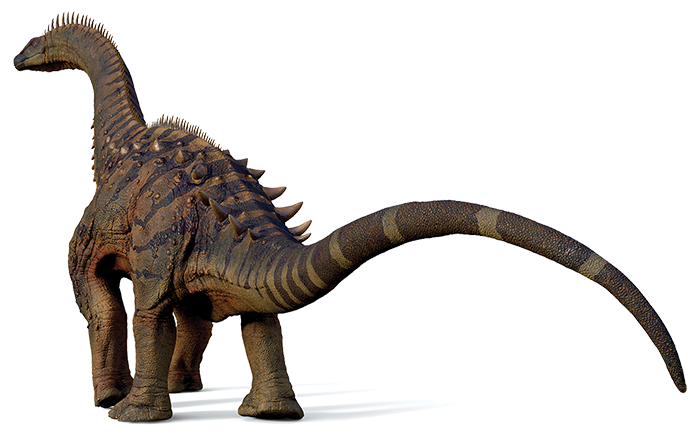

From Moon Dirt to Dinosaurs
Dr. James Carter joined the Graduate Research Center of the Southwest as a postdoctoral researcher in 1964. Throughout his career as a UT Dallas geoscientist, Carter studied everything from the Earth’s upper crust to environmental geochemistry to paleontology. He helped train Apollo astronauts in field geology, analyzed lunar samples and created simulated moon dirt for NASA to test equipment. He also helped publicize a UTD student’s discovery of and helped excavate the articulated neck of an Alamosaurus in Big Bend National Park. One of the largest dinosaur fossils ever found in Texas, the skeleton is on display at the Perot Museum of Nature and Science.
Image-Guided Medicine
Dr. Baowei Fei is a leader in developing image-guided intervention technology that allows for earlier detection of potentially cancerous cells. Fei also is developing a smart surgical microscope that uses hyperspectral imaging and artificial intelligence to detect cancer cells in real-time during surgery for more complete removal of a tumor. He holds the Cecil H. and Ida Green Chair in Systems Biology Science at UT Dallas and is also a professor of radiology at UT Southwestern Medical Center.














